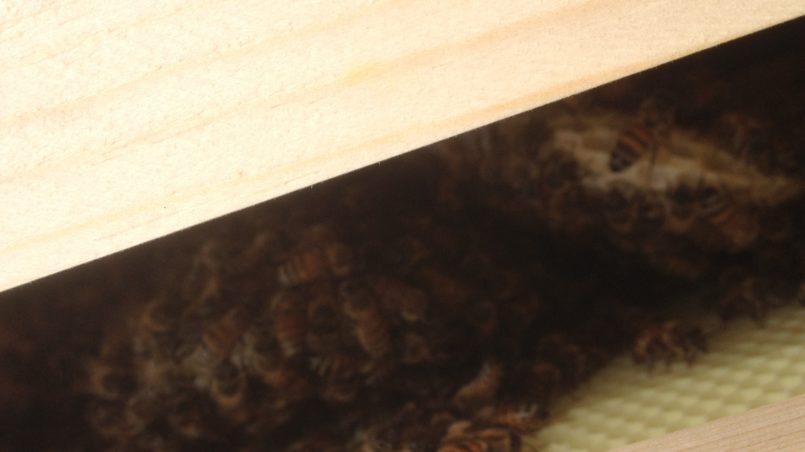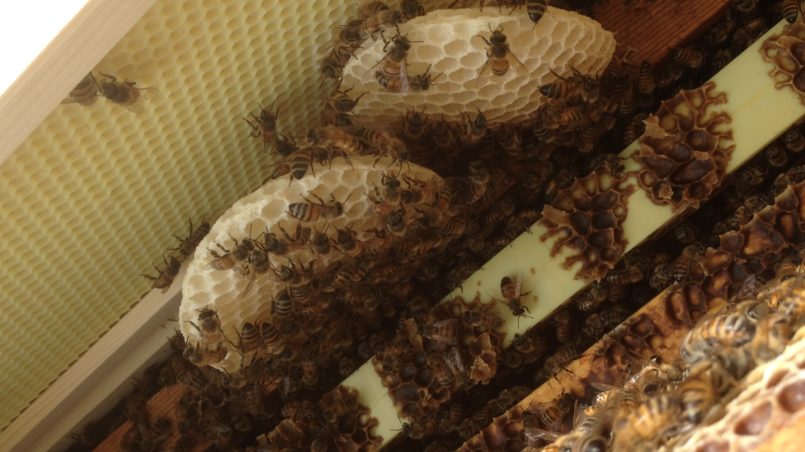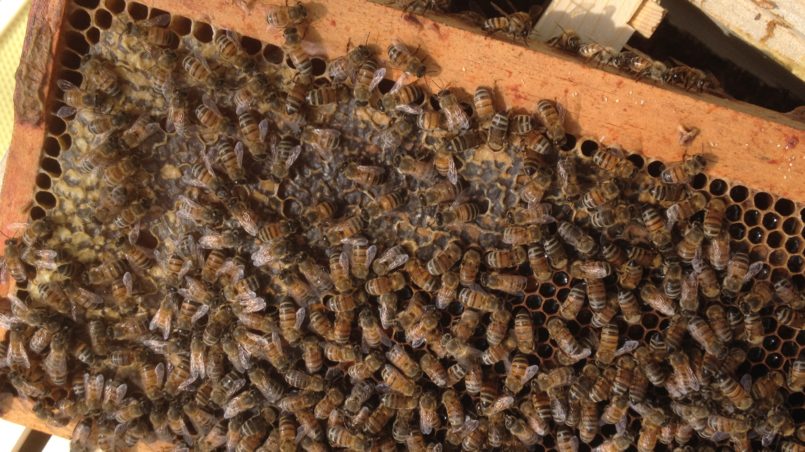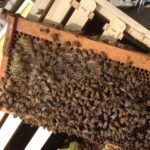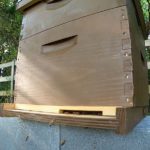Our beehive has turned into a fun adventure! Ruth came out (our beekeeper) and provided the update below:
“First, the bees have drawn out wax honey comb on almost all of the frames. On picture 7, you can see wax comb at the tops of the frames. That is actually a big deal because it takes a lot of food and energy for the bees to create their wax home.
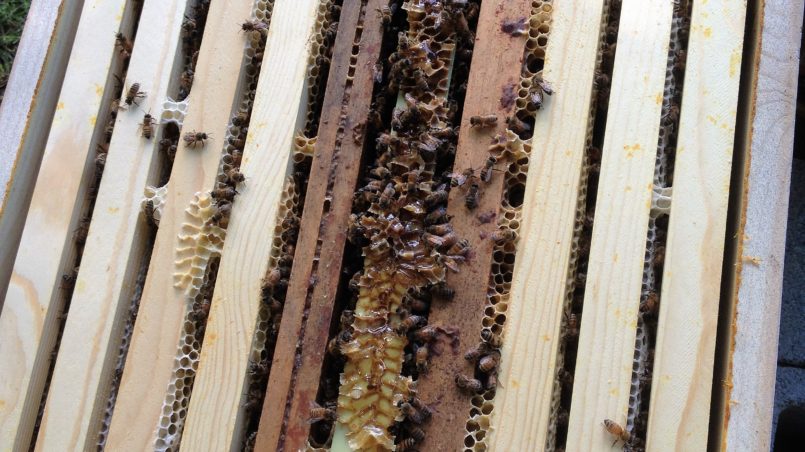
In modern beekeeping, the bees only have to make the wax combs once, and those combs get reused in all their years to come. That is why it is rare to get any excess honey the first year that a hive is becoming established. All that extra energy goes into building their home. Once built, they can use all their energies on storing honey. It is also nice that they have filled up their box with comb now, because after the summer solstice (June 21), the days start getting shorter and the bees stop building wax.
In photo 8, which is part of the brood nest, you can see yellow capped cells with a few empty cells scattered throughout.

In each of these capped cells, there is a baby bee pupating and she will chew her way out of the cells in a few days. As a beekeeper, I am happy to see that the queen has laid eggs to the edges of the frames, and she did not leave any big empty spots in the brood nest, which can indicate a possible disease or failing queen. I am also happy to see that at the top edge of the frame (turned sideways on the left) you can see nectar in cells with very white comb capping some of the cells. These are honey stores that the bees will use to feed their young.
In photo 9, you see a frame filled with nectar that is almost dehydrated enough to be honey.
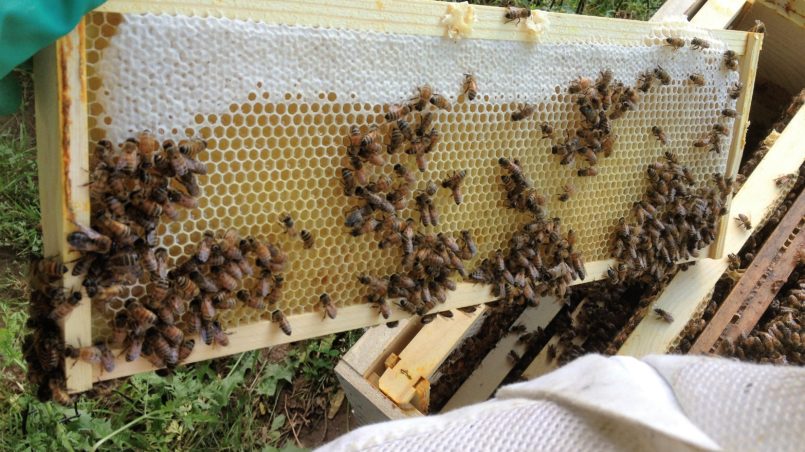
As the moisture from the nectar evaporates off, the nectar and bee enzyme concentrate turns into honey. When it is sufficiently thick, the bees will cap off the cells with brand new white wax to store for the winter. It turns out that all beeswax starts out pure white, but it gets yellow with age as the bees bring in pollen on their feet and turn the wax to the yellow color people think of. As a bee caretaker, it is nice to see that they are bringing in enough nectar to store the extra honey, which they will need in the fall and winter.
Finally, in photo 10, you will see little wax cups hanging down off the bottom of the frame.

This is the ultimate sign of good bee health. These are the makings of swarm cells. As you may recall, when the hive gets crowded enough, and the nectar is plentiful, the bees will raise extra queens to send off with some of the hive to make new hives. This hive is actively preparing to swarm, which is pretty impressive for a first year hive. Usually they don’t consider swarming until the second year. Anyway, in each of those little cups, there is a larva being fed lots of royal jelly to grow into a queen. Those cups look like they are about two days old, which means that in 14 days from June 6th, when I inspected, there will be virgin queens hatching out of their cells, around June 20th. And if left alone, the virgin queens will mate within a week of that time, and a swarm will emerge from the hive any time after June 20th.
And an actual swarm of bees is the most amazing natural phenomena to witness. It is like a tornado of thousands of bees emerging from the hive and going nuts for about 15 minutes, then it is done. The air becomes electric with all the activity, and bees almost never sting when swarming. So to those unfamiliar with bees, it is surely terrifying, but for a beekeeper it is magnificent.
So as a beekeeper, an important decision must be made. Do you take advantage of the bees’ good fortune, and split the hive into two or more hives, essentially making an artificial swarm and increasing your hive count? Or do you let nature take its course and hope that when they swarm, they leave enough bees and honey stores for the original hive to make it through the winter? Or do you defeat their swarming efforts by cutting out the queen cells, so they don’t have any extra queens and can’t swarm? Ask two beekeepers the same question and you’ll get at least three answers about what the right thing is to do.
My instinct for your hive is to take the queen cells out and put on another hive box to give the queen more room. Then a swarm won’t leave with half of the colony’s honey, and you’ll be left with a strong hive going into winter. I can use the queen cells in other hives to replace older queens who are failing.”

